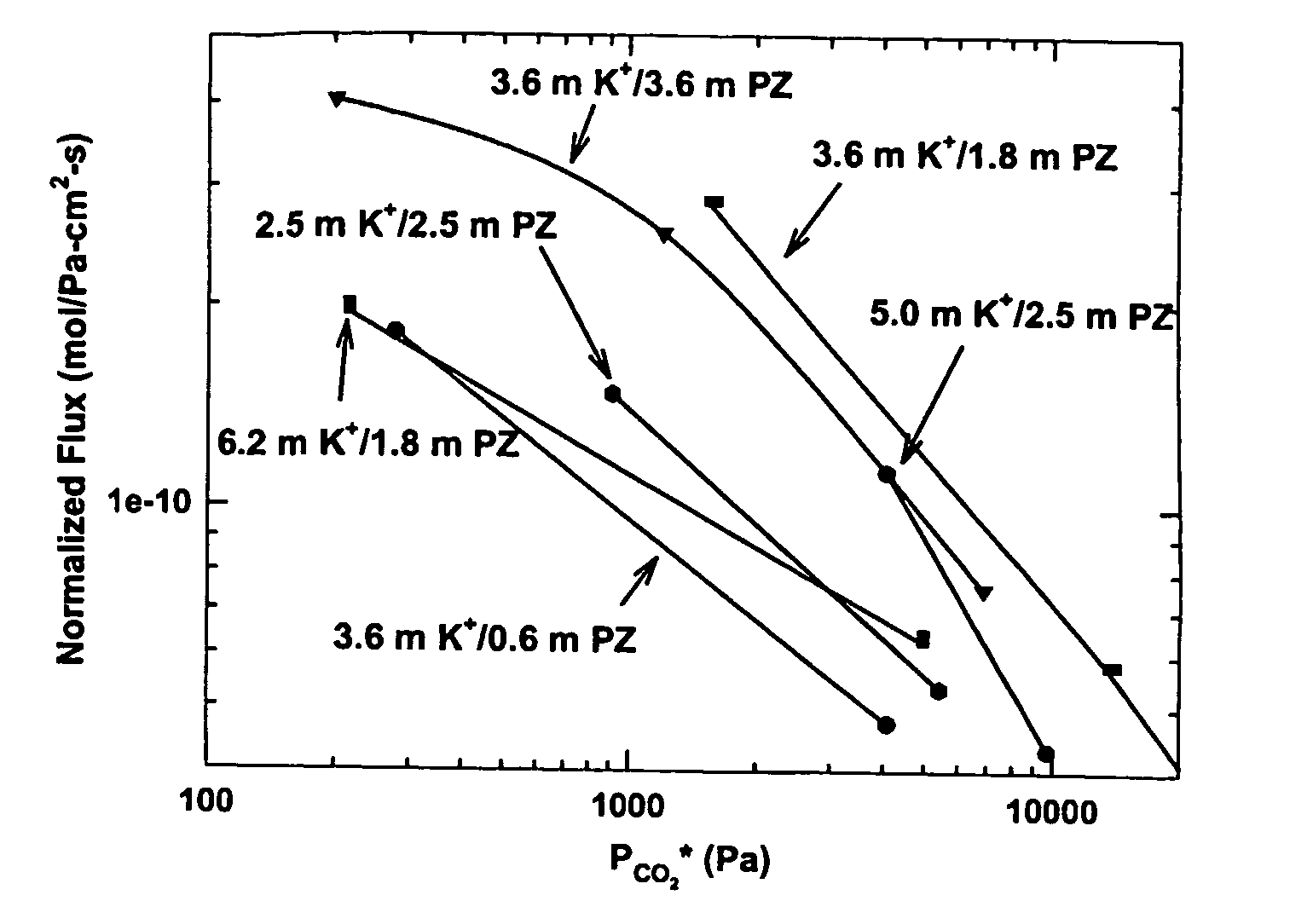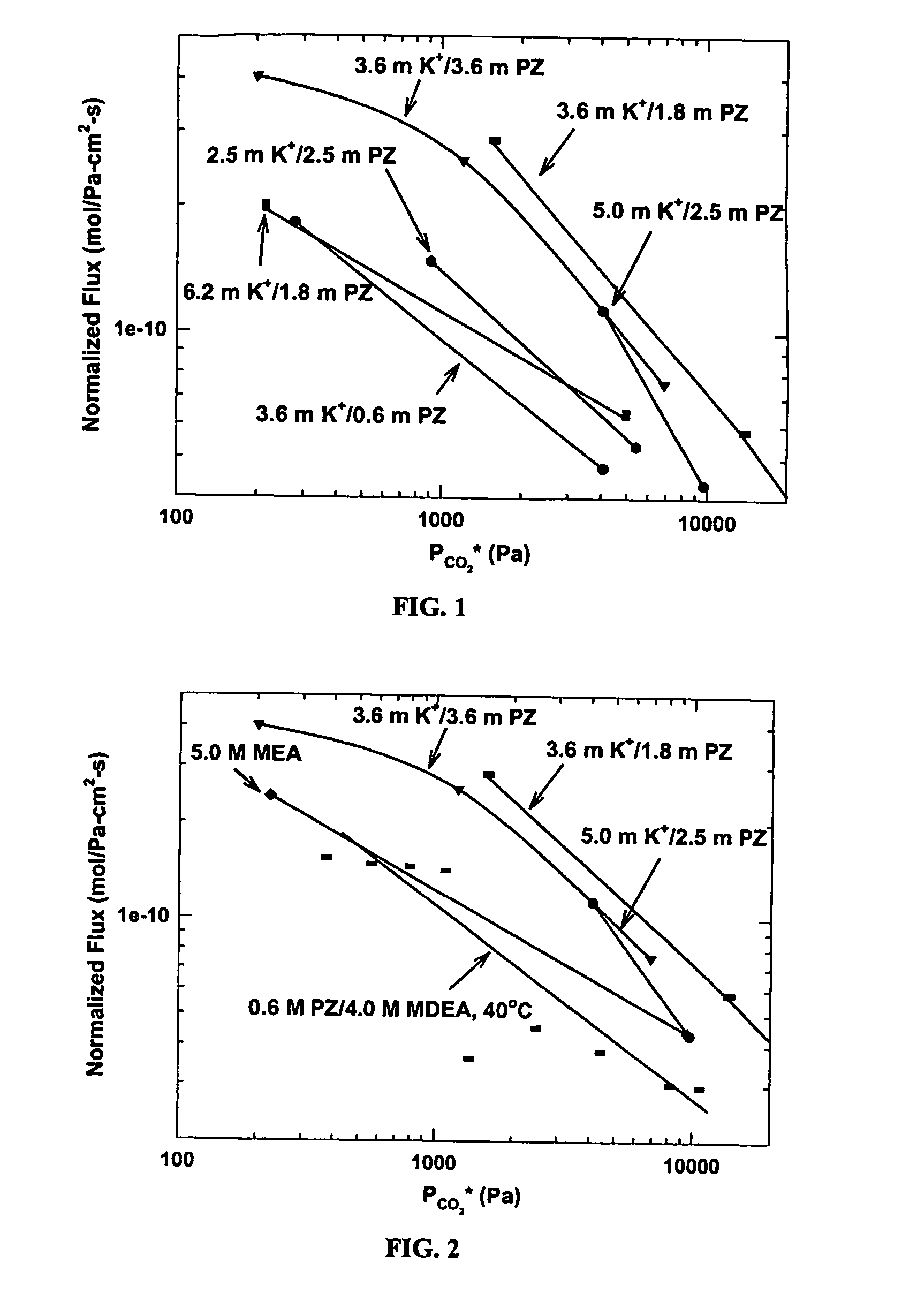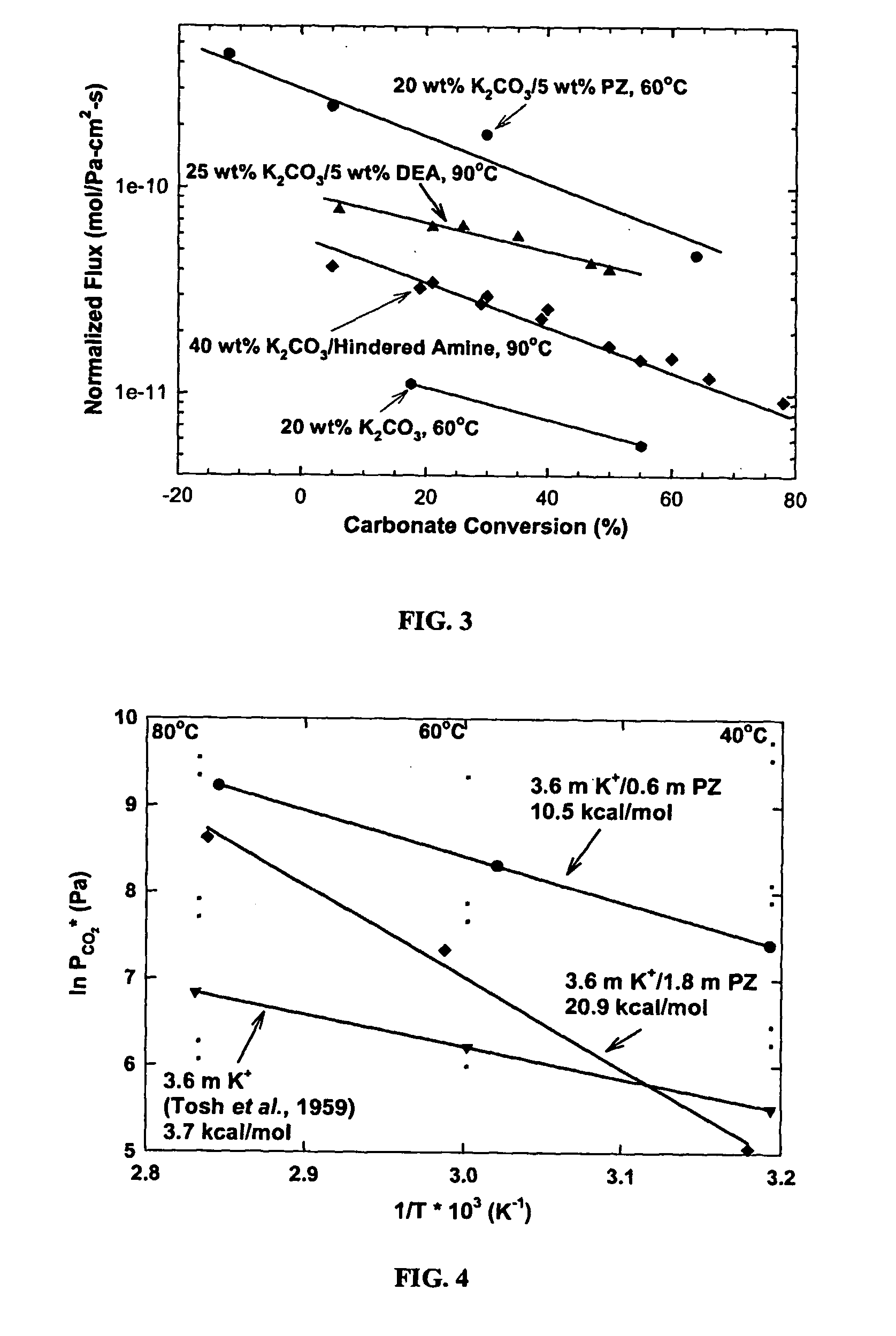Polyamine/alkali salt blends for carbon dioxide removal from gas streams
a technology of alkali salt and carbon dioxide, which is applied in the direction of hydrogen sulfide, sulfur compounds, separation processes, etc., can solve the problems of increasing the cost of electricity by 50%, the concentration of piperazine greater than about 1.3 m is not usable, and the process can be expensiv
- Summary
- Abstract
- Description
- Claims
- Application Information
AI Technical Summary
Benefits of technology
Problems solved by technology
Method used
Image
Examples
example 1
Solvent Blends
[0072] There are at least three characteristics that define the usefulness and the efficiency of a solvent blend: the rate of CO2 absorption, the heat of CO2 absorption, and the capacity. Table 2 provides a summary of these characteristics for several systems in comparison to the standard technology of 7 m MEA and highlights the advantages of this invention. Values reported stem from experimental data and model predictions from Bishnoi, Sanjay. “Carbon Dioxide Absorption and Solution Equilibrium in Piperazine Activated Methyldiethanolamine.” Doctor of Philosophy Dissertation, The University of Texas at Austin, 2000 and J. T. Cullinane. “Carbon Dioxide Absorption in Aqueous Mixtures of Potassium Carbonate and Piperazine.” M. S. Thesis, The University of Texas at Austin, May 2002.
TABLE 2Ratea × 1010−ΔHabsbΔLoadingcVolatilitydSolvent(mol / Pa − cm2 − s)(kcal / mol CO2)(mol CO2 / kg H2O)(Pa)7 m MEA0.4621.90.7914.81.8 m PZ0.8719.10.406.13.6 m K+ / 0.6 m PZ0.389.50.480.45.0 m K+ / ...
example 2
Rate of Absorption Advantages
[0073] The importance of a fast rate of absorption cannot be understated, as it is responsible for determining solvent rates and column height. Increasing the rate of CO2 absorption allows a lower liquid flowrate, which reduces the energy required for operation of the process. Alternatively, the column height could be reduced, reducing the pressure drop across the column and the associated energy needs.
[0074]FIG. 1 shows a marked difference between solutions using catalytic amounts of piperazine and solutions using large amounts at 60° C. In a generalization of the effect of solvent composition on rate, a three- to six-fold increase in piperazine concentration results in a rate of absorption accelerated by a factor of two to three. Also, solvents with K+ / PZ ratios of one to two give rates substantially improved over solvents with ratios of three to six. In a specific demonstration of these effects, a 5.0 m K+ / 2.5 m PZ solution absorbs CO2 2.5 times fas...
example 3
Heat of Absorption Flexibility
[0076] An additional advantage of the current invention is demonstrated in FIG. 4. The heat of absorption, like the rate of absorption, depends on the piperazine concentration. A higher heat of absorption indicates more energy is needed to regenerate the solvent. A low heat of absorption is more favorable under ordinary operating conditions.
[0077] From FIG. 4, a variety of solvent compositions can be envisioned, each with different characteristics. At one extreme, the solvent can contain large concentrations of PZ and have fast rates and a high heat of absorption (˜20 kcal / mol CO2). Operation in this mode would result in a rate of absorption 1.5 to 5 times faster than 5.0 M MEA and a comparable heat of absorption. At the other extreme, the solvent can contain less PZ and have rates comparable to 5.0 M MEA, but a heat of absorption a factor of two less. This performance flexibility results in a solvent that can be “tuned” to specific operations and ope...
PUM
| Property | Measurement | Unit |
|---|---|---|
| temperature | aaaaa | aaaaa |
| temperature | aaaaa | aaaaa |
| temperature | aaaaa | aaaaa |
Abstract
Description
Claims
Application Information
 Login to View More
Login to View More - R&D
- Intellectual Property
- Life Sciences
- Materials
- Tech Scout
- Unparalleled Data Quality
- Higher Quality Content
- 60% Fewer Hallucinations
Browse by: Latest US Patents, China's latest patents, Technical Efficacy Thesaurus, Application Domain, Technology Topic, Popular Technical Reports.
© 2025 PatSnap. All rights reserved.Legal|Privacy policy|Modern Slavery Act Transparency Statement|Sitemap|About US| Contact US: help@patsnap.com



